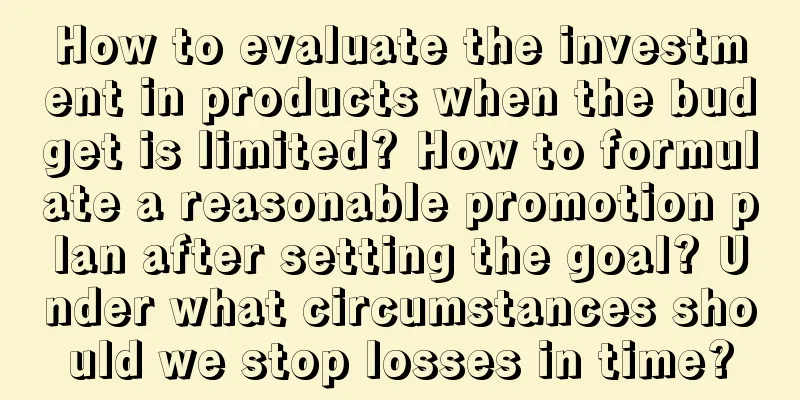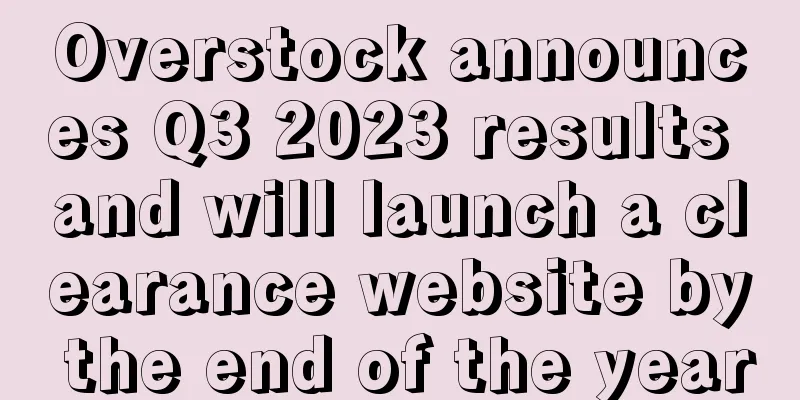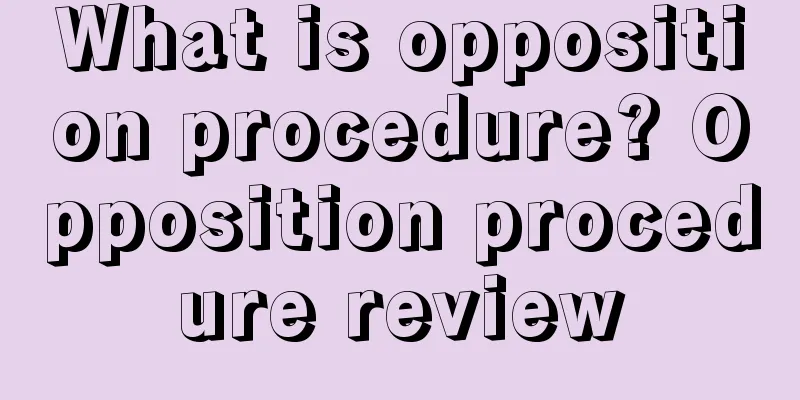|
Anonymous user I am a small, pure white hat seller who works alone. I used to operate in a small category and barely survived. However, due to the influx of a large number of sellers this year and the price war at cost price, the existing store products have basically lost their profits, so I am looking for new opportunities.
In the past, I didn’t have a clear operation plan. I just looked for keywords, wrote listings, modified pictures, and adjusted ad keywords. But I never formed a system. Although I felt like I knew a little bit about everything, I couldn’t connect all of them together.
I recently selected a few new products, and they performed well after testing. Now I need to ship a large quantity of goods and make an operation plan. But I found myself stuck in setting up a promotion plan. I never set one before, and just sold them as long as there was profit. Because the category is small, I can get on the front page by just running an ad, so I never made a promotion plan.
1. What is the promotion rhythm? I have been seeing everyone discussing on the forum that rhythm is important. Some friends say that it is to do the right thing at the right time, but how can I judge whether it is correct? Although the promotion rhythm of each category is different.
2. After the new product passes the test, how do I determine the promotion goals?
The order volume target and profit target. When can I make a profit? I know that it is difficult for new products to make a profit in the early stage, but as for the order target, what data should I base it on? Because often in many markets, there are some older competitors buying and there are more comments. If I say right away that my goal is to be the top BSR, it’s not very realistic. Or should I decide this goal based on my expected profit? Or the natural position of keywords?
3. After determining the sales target, how to determine a reasonable promotion budget
Small sellers have limited budgets. How to evaluate the appropriate budget for a product? To put it bluntly, how to look at a product and how much money it will cost to promote it in the early stage. If it exceeds a certain time point or the cost is exceeded, it is necessary to stop the loss in time.
4. How to determine the advertising budget
Many friends say that the advertising budget can be unlimited if the advertising performance is good. However, the profits of most of my existing products are almost all eaten up by advertising. Products that were previously sold for 15.99 are now sold for 6.99 by new sellers. Advertising costs have also risen sharply, and the homepage has reached 1.8. The Acos of large keywords is 50%+, and the traffic of small keywords is relatively small. Originally, advertising accounted for 30%, but due to price wars, products cannot compete, and advertising accounts for as much as 60%. So I feel that I can only reduce prices here, and the products are standard products.
When modifying the advertisement, I have been hesitating whether to directly reduce the advertising budget or lower the bids. But if I think about it, if I lower the bids, the budget will still be used up, but the ad position will be further back. Amazon will tend to spend all the budget, no matter how much the bids are.
I am re-planning my store recently. The profit margins of many products are very thin. I have been indifferent for too long, and I find that there are too many things I don’t understand when I study. Sometimes I think about these things and just do them as before, but I always want to see the sun through the clouds, which is very entangled. The logic is not clear and it feels confusing.
If you guys have seen other posts about learning operations and promotion, please recommend them to me. Thank you very much!
"Wonderful Reply"
cb small yasuo Hello, the rhythm is to achieve the goal according to your promotion plan.
1. For example, if I want to get more clicks every day than the day before, I need to keep the traffic going up for 2 weeks. Then I will increase the budget every 2 days in these 2 weeks. If the budget cannot be used up, I will increase CPC + budget to make Amazon think that my product is popular.
If a new product gets 10 clicks per day, Amazon will think your product is unpopular, or you need to get BD qualification after selling the product for about 1-2 months. In that case, your sales in the third and fourth weeks must reach at least 20 orders. In the second week, you need to average at least 10 orders. In the first week, you need to average 5 orders per day. To achieve this goal, you may need to keep pushing up your ads in the first and second weeks to reach your target sales. In the third and fourth weeks, you can increase sales outside the site and report LD twice. Then, there is a high probability that you will be recommended by BD. The process of ensuring sales in the middle is the rhythm.
2. Promotion goal. If it is a standard product, find a product that is most similar to your product in terms of function and has a similar evaluation to yours. You can use the ranking of this competitor as your goal, for example, to reach this ranking in two months. Non-standard products have great volatility. For example, if your order volume goal is 20 orders a day, you can set a goal based on the order volume.
3. Different products require different advertising budgets. You can estimate your advertising order share to be 80% in the first week, 50% in the second week, and 40% in the third week. The data is uncertain. You will know the real data only when you actually promote it. If you start with long-tail keywords, the budget for the day = CPC/conversion rate*estimated order volume*advertising order share
4. Don’t worry. If you have an idea, you can try it directly. First, slowly lower the CPC, for example, by 0.05, and observe the effect (ad orders or ACOS) for two days. If the change is not obvious, you can continue to lower it until the effect becomes worse. You can adjust it back to the last CPC. After adjusting the appropriate CPC, adjust the budget appropriately according to the order situation. Little fish swims and swims • United States • 2024-04-10 17:18 @cb小亚索: Can you talk about the conversion rate of advertising? The conversion rate of new product advertising has not been improved? How to optimize it?
cb Xiao Yasuo • Shenzhen • 2024-04-25 11:25 @小鱼儿游呀游: It is normal that the conversion rate of new product ads cannot be improved. Putting aside the ad position and product design, the conversion rate is only related to your pictures, the number of reviews and ratings, the price + discount strength, and the relevance of keywords. We can do VINE and merge the reviews, and we can do bigger coupons for the price discount strength. The ad position can be bid according to the ad position performance, so that more clicks will be tilted to the position with high conversion rate.
advafasd • Guangzhou • 2024-04-12 16:21 I encountered the same problem. I didn’t have a promotion plan, but I increased the advertising budget based on the changes in traffic growth in the early stage. Several models I promoted had a common problem. When the average daily order volume reached more than 20, it was difficult to increase sales. I tried to expand the advertising data and lower the price, but it didn’t increase sales. It was so difficult.
cb Xiao Yasuo • Shenzhen • 2024-04-25 11:35 @advafasd: Actually, I feel that after a product reaches a certain number of reviews, its sales volume is basically fixed. At this time, you can either work harder on BD, or look for opportunities based on the mistakes of competitors, or see when the traffic words can pick up. Hard promotion will only reduce profits. Every product has a traffic critical point. The main purpose is to find this sales critical point and increase profits.
advafasd • Guangzhou • 2024-05-13 16:30 @cb小亚索: You have a point. I tried BD and it increased by 1 times. After BD, it recovered to the previous volume. It only dropped, not increased. It is so hard to hold. It has also dropped a lot recently.
Be careful, the big shark is coming • Shenzhen • 2024-07-29 14:49 @cb小亚索: 1. How do you guarantee that the average number of orders for a new product is 5 in the first week and 10 in the second week? What if the ad cannot be promoted? What if the ad is promoted but there is no conversion? 2. For new products, it is almost impossible to find products with similar reviews and functions that are ranked at the top. 3. It is too exaggerated. The proportion of organic orders in 3 weeks is 60+. Although you said that the data is uncertain, it is easy to mislead people. 4. The attribution cycle is 7 days, and the effect cannot be seen in 2 days.
lmlmlmlm • Shenzhen • 2024-08-20 14:22 @小心大鲨来了: The way of playing is different, I believed in his approach and used it to promote new products. I spent $100 in two days to get one order and then I became quiet. I still suggest that those who don't know much about it should take it slow, step by step. It's useless to lower the price if there are no reviews in the early stage, and advertising will not bring in orders.
The Chariot That Can't Be Stopped • United States • 2024-08-31 15:43 @小心大鲨来了: The situation you are talking about is different from the situation he is talking about. He was able to control an average of 5 orders per day in the first week and 10 orders per day in the second week. This is because of a systematic layout. You need to create an image with an extremely high conversion rate. You need to build a multi-dimensional vocabulary library. According to the conversion effect of your new product, you need to embed precise advertising words from the title, five points, ST, and long description.
After these basic frameworks are built, you can promote advertising keywords according to the goals you have already set. According to the principle of getting on the homepage in 8 days, starting with the easy ones and then moving on to the difficult ones, you can push some keywords to the first three pages, find keywords with good conversion effects, and then reduce the advertising budget and bidding in turn. This can be done.
Of course, the conversion rate will also reach a certain bottleneck period, which requires you to break the conversion label recognition given to you by the system. You can break through this bottleneck through flash sales and BD on the site. Outside the site, you can also further improve the conversion coefficient of keywords through influencers and groups. In addition, when you already have a very large click share for this keyword, you can open related traffic, target ASIN, SD to target the crowd, and then achieve your goal of impacting rankings and profitability.
Cross-border Barley - 8 years of cross-border experience, let's communicate together Agree with: Stay with me till the end What is the promotion rhythm? The so-called promotion rhythm is actually a control of the product promotion stage in combination with the product's goals and promotion strategies. To determine whether a promotion rhythm is correct, it is necessary to disassemble it. If you want to clarify the goals and strategies in the early stage, the underlying logic is to start from positioning.
1. Life cycle positioning
Planning the pace before promoting a product actually means making a good promotion plan and clarifying the operational focus at different time stages.
The life cycle of a general product is divided into four stages: start-up, growth, maturity and decline. The characteristics and operation strategies in each stage are different.
Currently, most categories on Amazon plan their entire product life cycle with the rhythm of early stage promotion at a loss, mid-term break-even, and late stage cost recovery and profit.
2. Product strategic positioning
In addition to changing over time, operational strategies will also vary based on our positioning of the product itself. We can use the theory of the "Boston Matrix Model" to divide products.
In the four quadrants of product classification, there are main products, new products, potential products, and long-tail products. Products with different positioning have different subsequent promotion goals and advertising purposes.
In addition to sales and time as the horizontal and vertical axes, the key lies in the data analysis of the early stage of product market research, which can judge the subsequent positioning based on the investment size and confidence in the new product.
3. Consumer conversion positioning
Generally speaking, the product strategy can be clarified by combining product and cycle positioning, but when it comes to the specific goal level, it is best to combine it with actual data performance. The consumer search and purchase process actually has a set of thinking models, which is the classic marketing funnel.
On Amazon, it is mainly divided into the stages of awareness, consideration & purchase, and loyalty. The selection of advertisements and budget allocation are different in different stages. At the same time, you can allocate the advertising budget and confirm the delivery form in combination with the above positioning. The key is to implement it.
The promotion rhythm in each stage is actually different, and sellers in different categories and with different strengths will also have differences, but at least from the above three dimensions, you can think about how to judge whether the rhythm is correct.
How to determine the promotion goals?
The topic of promotion goals is actually quite general. After all, the goals that the boss focuses on are inconsistent with the goals of management and operations. However, all goals need to comply with the SMART principle and meet the characteristics of being specific, measurable, time-bound, relevant, and time-bound. (For details, you can learn about project management.) However, if you want to implement it, the key lies in the management and review of operational data. For new products, the key lies in the planning of profit structure data and inventory management data.
1. Profit structure:
The conventional profit calculation formula = sales - product cost - logistics cost - first-leg logistics - platform commission - delivery fee - return fee - storage fee. This is just a simple income and cost structure. For white hat operations, operations also involve two core costs that directly reflect the operation level and profit situation, that is, advertising and promotion modules.
Order target: You can divide the competitor links you collected during the research into the top, middle, and bottom categories according to category rankings. You can determine the replicability of the competitor by confirming the corresponding search term ranking interval, the number of search terms ranked before 3 pages, the number of associated slots, and other information.
Then, you can use third-party tools to count sales, and you can also use daily monitoring to imitate its operating methods and rhythm. Here, in the process of finding these products, I will teach you a little trick: you can turn to the second page of the category sales list, and see the links of the top 400 products in the sales list by modifying the page number code. For some large categories, you can quickly find the benchmark competitive products.
Advertising cost: It can be calculated by estimating conversion rate and CPC bidding. Here, the probability of the PC value of the advertisement can be introduced for reasonable planning. Due to limited space, it will not be extended.
Promotional costs: The frequency and intensity of promotions vary based on the degree of competition in the category. The key is to plan the frequency and intensity well. The rules of different promotional superpositions and price impacts need to be practiced and studied.
2. Inventory planning:
All new product plans must be combined with stocking plans, which include quantity management for the first batch and return orders, control of the entire logistics cycle, and monitoring and tracking of in-transit data. Due to limited space, this article will not be expanded.
However, in the promotion target stage, all sales targets must be combined with the product stocking plan. If the new product is well prepared in advance, the first batch of shipments usually needs to cover 3 months of sales.
Finally, in fact, goal management is not just about these contents. At the management level, it needs to be explained from the four dimensions of brand, product, channel, and market. The implementation of the marketing plan also needs to consider the dimensions of budget, goal decomposition, dynamic review, etc. If you are interested, follow me and I will slowly share this basic logic and methodology later.
How to determine a reasonable promotion budget?
I believe that after reading this, you will have a deeper understanding of the basic logic of product goals and operational rhythm, and the budget issue needs to be formulated in combination with the above modules.
Generally speaking, it is a reasonable ratio for marketing expenses to account for 3% to 8% of the target sales of the entire product, but it is different at different stages under different positioning. Therefore, it is recommended to use the method of dynamic adjustment in terms of budget, conduct profit review in stages, and determine the investment budget for the next stage based on the actual sales situation. Generally, only after a period of operation, we will have better actual data to support the budget plan.
How to determine the advertising budget?
There are many ways to optimize advertising budgets, but it is not reasonable to solve the problem of advertising investment-output ratio through budget optimization. If the advertising Acos is too high, the conversion rate and CPC need to be optimized. If the advertising expenditure ratio is too high, it can be achieved through budget control.
Budget control methods:
1. Time-based price adjustment: By analyzing the peak order time, the limited budget is concentrated on the high conversion time period. This can be achieved by adjusting the budget of the ad combination or ad campaign. Be careful not to close the ad group directly, but to set the budget to $1. Of course, many ERPs can set automatic rules.
2. Lower the bid: The bid is directly related to the ad exposure, and the ad placement will also directly affect the conversion. If you adjust the overall bid of the ad, it will have a direct impact on the weight. However, if you are in a long-term loss and have no improvement plan, you need to readjust the product positioning.
Budget allocation method:
1. Set the budget from top to bottom: You can first estimate a target sales volume, set an advertising spending percentage, refer to the company's average profit target or actual financial report data, allocate the overall account of the advertising account, and then break it down into the actual budget for each day and each advertising group.
Formula: Acos = advertising expenditure / advertising sales Advertising sales = selling price * number of advertising orders (target number of orders) Budget = (selling price * target number of orders) * target Acos
2. Set budget from the bottom up: You can first estimate a conversion rate, refer to the average conversion rate of the category, the category search conversion rate, and the keyword search conversion rate. These three indicators can also be confirmed in growth suggestions, category analysis tools, and business opportunity detectors, and you can also use third-party tools to research keyword conversion rates. Then, calculate the expected number of clicks through the target order volume, and then multiply it by the bid value to calculate the actual budget.
Formula: Advertising cost = click-through rate * bid click volume = target number of orders / conversion rate Advertising cost (budget) = target number of orders / conversion rate * bid
It should be so - God helps those who help themselves Agree from: yisimaoyi , lgh415 , cheese toast , candyhappy1 , 1112DSF more » 1.What is the promotion rhythm?
There are two main purposes of paying attention to rhythm. One is to avoid wasting the buff of the new product support period. The other is that the growth of search weight of Amazon's normal listings is generally believed to be spiral (explosive under some special conditions), so the rhythm is very important.
The length of the new product promotion period depends largely on the degree of market competition and your target ranking. If your ranking is at the top and the competition is not small, then the promotion period may be as long as a quarter or even half a year. Of course, during this quarter or half a year, the number of orders will continue to grow, but it will take a longer period to achieve the sales target and increase the gross profit margin.
The usual rhythm is to test the inclusion in the early stage, run data analysis, and then run keyword phrases and precision when the links have certain conversion conditions in the mid-term, mainly using SP to promote natural search weight and reduce advertising dependence. In the mid-to-late stage, SB marketing traffic, SD display traffic and other drainage methods are used to enrich and expand the traffic structure and stabilize the order volume. Promotional methods during the period are also indispensable, such as deal frequency, price structure adjustment, rapid accumulation of comments, etc. Conversion is a prerequisite, and it can be achieved with drainage (advertising) to achieve twice the result with half the effort.
You can refer to my previous reply: https://www.wearesellers.com/question/70952 (playing direction at different stages)
2. After the product is tested, how do you determine the promotion goals?
Passing the test means that the product strength and link are fine. That is the problem of promotion growth. During the promotion period of new products, the promotion goals are: advertising conversion rate, traffic, followed by sales and ranking, because the latter is the result of the growth of the former.
In the early stage, you should first conduct market research to confirm your product positioning, target ranking, and sales ranking, and then split the goals into one month's goal, the second month's goal... Assuming that your target monthly sales volume is 1,000 and the promotion period is set for 3 months, then the pressure is that the sales targets in the first three months must be met. In this way, starting from the fourth month, that is, after the promotion period, you will have room to increase the gross profit margin.
Once you have confirmed your goals for the promotion period, many points of concern will become clear. Advertising is all about conversion rate. The ad position with the highest conversion rate is the search position. What time period has the highest conversion rate? (During deals, holidays, or big sales?), and what time period can increase ad clicks? What you need to focus on is the conversion rate. As for CPC and ACOS, these input-output indicators are the goals after the promotion period. During the promotion period, only growth and the promotion of links are pursued.
By breaking it down in this way, you will know the ad clicks required for the link in the first month, the ad clicks at what positions, the ad conversion rate, what conditions are needed to constitute the conversion rate, deal arrangement, price structure (PD, coupon, code, list price, sale price), comment growth methods (mirror? zombie? vine? global? etc.?), and finally execute from a high vantage point and from top to bottom.
The final indicator verification is: the upper and lower limits of the session in the business report continue to increase and stabilize at a level, and the conversion rate stabilizes and fluctuates within a reasonable range. Keyword ranking is only one of the influencing indicators. Because different categories have different traffic structures, you may not need to put the keywords in the top to get the ranking you need, but our ultimate goal is the same: session and conversion rate.
3. After determining the sales target, how to determine a reasonable promotion budget?
Because we don't know the actual situation of your category, if it is difficult to define it according to the spending ratio and sales ratio in the early stage, you can start with the order quantity target in the first month, such as 500 orders, of which the advertising order target is calculated based on 200 orders, and the advertising conversion rate is planned to be around 15%. The CPC is set according to the ad position target and the recommended bid, and finally the ad clicks and advertising spending amount you need can be calculated.
The above settings will be adjusted according to your actual performance. For example, when your advertising conversion is relatively poor, the advertising budget should not continue to maintain a high investment. You need to adjust the conversion conditions (ad position and listing) and then increase the budget.
After the first month, determine the advertising ratio and expenditure ratio. In the second month, define your advertising expenditure ratio and sales ratio based on the sales target.
During the whole process, the advertising unit price has a natural impact, which directly determines your expenditure ratio and ACOS size. Usually, as long as you review the situation (one or two weeks), if the proportion of advertising expenditure is not very uncontrollable, even if your advertising expenditure is increasing, it can indirectly explain your natural weight (natural orders and sales are increasing), that is, the purpose of advertising to promote natural growth has achieved a certain degree of result. When your other cost ratios are set and the proportion of advertising expenditure is controllable, your gross profit margin during the promotion period can naturally be effectively controlled (so as not to lose money, or so as not to lose money that makes you confused)
Anonymous user Agree from: candyhappy1, biiite, MHZ1968, Wsnd19 What is the promotion rhythm?
My understanding is node control, which is to check whether the promotion has achieved the expected promotion effect through time nodes. If it cannot be achieved, how to adjust the time point. It is attached to your promotion goals.
It is true that you should do the right thing at the right time. To verify it, you need to compare it with your preset promotion goals. For example, how many VINE plans should be launched for white hat promotion of new product reviews? When should they be launched? When is the expected arrival time? At what point does the advertisement start? What type of advertisement should be used? Make a good plan for the time nodes and content, and then follow the planning area to determine whether the results are correct.
After the new product passes the test, how do I determine the promotion goals?
The test will give some data feedback, such as conversion rate, CPC, advertising order ratio, etc. At this time, you can make a judgment based on your expectations and the competition situation. That is: make a relatively accurate prediction of the competitiveness of the new product. At this time, I will focus on the price and review information of the competitor's product and then judge the competitiveness based on my own pricing.
For example: 10-20 reviews, average category rating, average sales of competitors with the same selling price is 10 orders/day; about 50 reviews, average category rating, average sales of competitors with the same selling price is 30 orders/day... It is best to analyze competitors, and then judge based on your own early inventory, review planning, and budget size.
Another way is to base your promotion on your own financial capacity. As a solo seller, you definitely have limited funds. You will have a budget for each type of tea you promote, and you can work backwards to determine your goals based on that budget. For example, in extreme cases (product failure), I have set a budget of $5,000 for this product. If the promotion cycle is three months, based on information such as the conversion rate of the test data, $5,000 is expected to bring in 20,000 orders, and this data should be your promotion goal.
After determining the sales target, how to determine a reasonable promotion budget <br>Similar to the second point, if you determine the target first, confirm it based on the target value. If the test advertising accounted for 50% of the orders, and it is expected that there will be 10 orders per day in the first month, then you need to prepare 150 orders of advertising fees in the first month.
That is: 1/CVR*CPC*150. During this period, there will be some VINE plan, review request and other fees, which will be added in. The second way is to reverse calculate according to your own budget.
How to determine the advertising budget <br>I have always felt that the ultimate goal of a solo seller is to make a profit. No matter how many orders you have, it is better to make money on every order. When the advertising costs are difficult or beyond your ability to bear, you need to evaluate the absolute value of the profit. Is it more cost-effective to run an ad or to transfer the advertising costs to the price? Everything is based on the actual profit. In the following two situations: 20 orders/day, excluding advertising, the profit per order is 1 USD; 10 orders/day, the profit per order is 2.5 USD. Which one do you choose?
Of course, any goal and plan is only a means to guide promotion. The market is changing, and what we can do is to make risks and results controllable as much as possible and make adjustments at any time.
I only S 100 million single vv What is the operational promotion rhythm? The rhythm is to select different types of keywords and run different types of advertisements in different life cycles of the product, and to cooperate with off-site and on-site deal coupons and prices to promote the product.
For example, during the new product period, if you want orders and ranking growth or the growth of natural keyword ranking, this requires a large upfront investment. This investment can refer to your profit margin. If the profit margin is 30%, then you may need to break even at around 30% to promote Tacos, or make a small loss slightly higher than the profit margin to promote it.
The same is true for the growth period, except that on this basis, more flash sales or activities are coordinated and more budgets are added. During the stable period, various means must be used to reasonably reduce advertising, appropriately increase prices, etc., to lower tacos, or appropriately increase prices, mainly to slowly reap profits. If your product life cycle is short, you must make quick decisions from the growth period to the stable period, otherwise when everyone lowers prices and the market shrinks, you have not yet recovered the cost of the product. Therefore, the operating rhythm is what you should do at each stage from promotion to growth to profit harvesting, and how to achieve the established goals.
How to determine the promotion target for new product promotion - As mentioned before, this promotion target should be determined based on your promotion budget and your product profit margin. The new product period will definitely be based on placing orders and brushing keywords. In fact, there are relatively few products that can make a profit during the new product period. Just make sure the promotion budget and profit margin are within an acceptable loss range and play your own way.
As for the advertising budget, you can plan it according to your own inventory. For example, if you have 1,000 inventory, and you spend 400 in the first month and 600 in the second month, you can roughly calculate how much advertising budget you need to achieve your target in the first month by (400/category conversion rate) * average CPC, and then allocate it. Of course, this allocation will not be 100% accurate, but if you pull the data for one month, at least the difference should not be too big.
Anonymous user
Agree from: 心悦 , HoyiousXBfamily , 豫杭 SHENZHEN , Janny001 I saw a sentence today that made a lot of sense: Any discussion of advertising without considering the product is a hooligan! Let me tell you about my simple promotion method. It is very simple, brainless and tedious, but I personally feel it is the most appropriate.
My promotion only lasts for the new product period (the first three months).
In the first three months, use an automatic budget of 20-100 per day. The budget must be spent completely without leaving any. Try to lower the bid a little bit so that the budget can be perfectly spent for the whole day (adjust by 0.01 a little bit). The budget must be spent completely. Also, you must deny the words, don't forget.
Starting from the third week, start to use it widely. It’s the same principle as automatic. After the money is spent, lower the bid little by little. It’s quite troublesome for me. I set up one advertising campaign for each word and give some budget to each one, about 3 to 10 US dollars, and spend it all.
At this time, you need to do something, collect all relevant keywords, including those automatically and those generated by advertisements. Collect all those collected by third-party software, and classify them into 123 according to relevance (it’s useless, I’m used to classifying them). Keep collecting and running, and start low-cost advertising.
Starting from the third month, start with precision and analyze the keyword rankings. If they are at the top, try to hit them. If they are not, don’t hit them. Just focus on being Buddhist.
The fourth month is here, the key point is here. If the advertisement is not profitable, is it still called advertising? Reduce it, reduce it little by little, until it is profitable, until there is no exposure. My promotion rhythm has ended.
If you don’t like it, please don’t criticize me. It’s always beneficial to me. Changsun Wushuai • Shenzhen • 2024-09-04 15:18 The original poster, I would like to ask if my analysis is correct. I feel that time is not the key, but the effect achieved. If the target effect is not achieved in the fourth month, the actions of the third month should be continued. In the third month, when it comes to precision targeting, “if you can’t hit it, don’t hit it” is a bit unclear. Does “if you can’t hit it, don’t hit it” refer to the conclusion after the attempt or the analysis before the attempt? “If you hit it, hit it” refers to the natural position obtained through the search on the front page, or the overall ranking of the keywords seen on the software. (Because I have always hit it through the natural position of the front-end search. If the position searched is at the front, I will add an advertisement for it, because it is cheaper. If you only look at the overall ranking of the keywords, the high ranking does have more traffic, but it is very expensive... Because I am a newbie, I dare not set the ACOS too high.)
Rouyuanshishi - 7 years of operation in Japan Asia... Agree with: Morven, Heroes of Sui and Tang Dynasties 1. What is the promotion rhythm?
Simply put, when it is time to increase traffic, do things that increase traffic, and when it is time to increase conversion rate, do things that increase conversion rate. Growth-stability-growth-stability
2. After a new product passes the test, how do I determine the promotion goals?
The order volume of the best seller can be your target reference coordinate system. For example, the best seller's order volume is 50 orders per day. Then you can set a small goal first, 5 orders per day in 1 month, 15 orders per day in 2 months... 50 orders per day in half a year.
3. After determining the sales target, how to determine a reasonable promotion budget?
Determine the staged ad click target based on the conversion rate. Suppose you know the conversion rate is 10% when testing the product, then you need to achieve 5 orders a day. Without a click base, you can gradually increase the ad clicks to 50 in the first month. In this way, the number of orders will only be greater than 5 and not less than 5 after 1 month (in addition to the actual increase in advertising, whether the conversion rate can reach and maintain 10% is also something you need to practice)
4. How to determine the advertising budget?
The third question has been answered, right? According to your target clicks, the staged promotion costs can also be obtained.
The main variable is actually the conversion rate. Under the premise of maintaining a good conversion rate, all you need to do is to gradually increase the pace of advertising promotion to achieve a gradual increase in the natural position of keywords.
Smoking cat cigarettes Agree from: zzxfa625 1. What is the promotion rhythm?
——Yes, do the right thing at the right time. For example, in the current environment of severe homogeneity, fierce market competition, and price involution, it is not suitable for new products to introduce too much general traffic at once. White hat approach, the early product interface layout is good, the advertisement is placed in the right position, and then the traffic channel is slowly opened. In the early stage, accurate traffic, with click-through rate as the top priority, supplemented by conversion rate, requires a relatively long time, slowly grows, and slowly opens traffic channels. Don't rush to introduce large traffic at once. The listing in the new product period cannot be digested and is prone to failure.
2. After the new product passes the test, how do I determine the promotion goals?
——The focus of the white hat strategy must be on the product. You must optimize the product interface based on market research and competitive product analysis before you start advertising. Of course, the ultimate goal is to reach BSR1, sub-category 10 or sub-category 20. This goal is set through early market research. (For example, if the orders of the TOP10 products account for 50% of the entire TOP100, then it is difficult to enter the top 10, but there is still a chance for the TOP20, so the goal is set to sub-category 20)
3. After determining the sales target, how to determine a reasonable promotion budget
——Generally, if the gross profit of a product is 25-30%, then the advertising + off-site budget should not exceed 15% of the total sales. Of course, if the gross profit of your product is above 50%, your promotion budget can be appropriately increased. At least ensure that the net profit of your product is 10 points.
4. How to determine the advertising budget
——Determine your advertising budget based on your category conversion rate, average CPC, and your goals.
Kriseyang - Amazon US seller for 3 years, mainly in 3C category, now independently leading the operation team Agree from: MHZ1968, Maggie1508 Promotion rhythm
In my opinion, it is your understanding of product categories and cycles. Why do different products have different promotion rhythms? Because the demand has changed. For example, the needs of young people and the needs of the elderly are definitely different. Only by grasping the product cycle can you make better actions.
Setting goals
1. Set goals based on your competitors. Your competitors are the ultimate position you want to achieve. For example, if you want to be in the top 5 in a subcategory, you need to know the sales volume of the fifth place. How long will it take you to reach this ranking from 0, combined with your own resources? This is a dynamic goal .
2. Formulate according to profit. My goal for this product is to make a certain amount of money in a month, and then I need to place a certain number of orders, and then use the number of orders to achieve the ranking I want.
Advertising budget
When setting an advertising budget, it depends on what your goal is. Generally speaking, advertisements for new products are ugly.
1. Quantify your advertising budget according to your goals. For example, if your planned sales for a day is $1,000, and 20% can be used for advertising, then your daily advertising budget is $200.
2. It depends on the actual situation. If you are a small seller who is just starting out, you can give a smaller budget in the early stage, 10 or 20 US dollars will do.
Retrained bricklayer - foreign trade bricklayer My personal understanding of the promotion rhythm is like the saying "Good wine needs no bush"; the pre-stage, new product stage, rising stage, mature stage, and decline stage. Although it is divided into these stages, in my opinion, it should always be promoted vigorously.
For example, in the new product period, it is necessary to let Amazon quickly identify your period. Based on the product characteristics, price, ABA click conversion ratio, ABA ranking in the search results, select words that suit your products, and set a budget based on your own traffic goals, then place them, observe whether there are clicks, whether there are conversions, and then adjust and optimize. For example, during the recession period, is the main reason for the recession centered around the product or around traffic? If it is around traffic, then what is the original source of your advantage? What are you stolen? Only by keeping your attention through plug-ins or ERP can you maintain your original position.
Setting the promotion goal is to find a ceiling. How high is the ceiling of a competitor similar to yours, you can set the same high ceiling. Now that the Amazon front desk can directly see the approximate sales volume in the past 30 days, you can speculate on the conversion rate and traffic of the competitor. What is its traffic, what terms it comes from, calculate according to break-even, what is the acceptable budget and CPC. After calculating these factors, we will promote it next, let these factors become active, run out of data, and make adjustments.
At present, my personal opinion is that "products are solutions to problems". Although they are also standard products, if you can provide more three-dimensional answers to the points that customers care about and the problems they want to solve, and explain that your plan can solve the problems encountered more worry-free. After doing this, it is the time to relay the advertising.
The above are all my personal simple insights, and I hope to let you go if you say something badly
|










